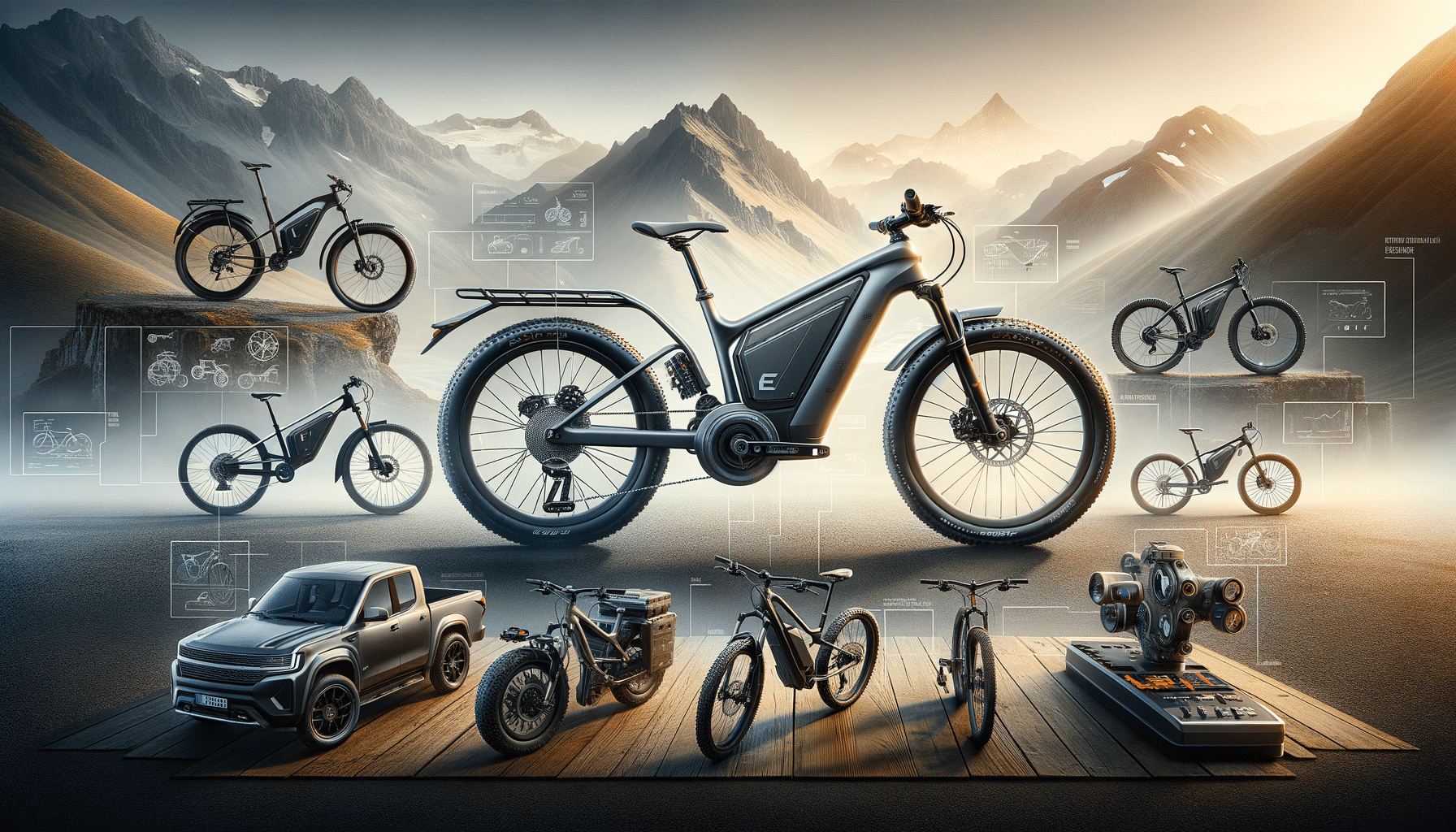Exploring the World of E-Bikes: A Comprehensive Guide to Buying Electric Bikes
Discover the transformative experience of owning an e-bike and how it can enhance your commuting and leisure activities.

Understanding the Rise of E-Bikes
The popularity of e-bikes has surged in recent years, transforming how we think about transportation. With urban areas becoming more congested and the environmental impact of traditional vehicles coming under scrutiny, e-bikes offer a sustainable and efficient alternative. They combine the convenience of a bicycle with the added power of an electric motor, making them an attractive option for both short commutes and leisurely rides.
E-bikes are particularly appealing due to their versatility. Many models come equipped with features that cater to different needs, such as cargo capacity for carrying groceries or equipment, and foldable designs for easy storage. The ability to choose between pedal-assist and throttle modes adds flexibility, allowing riders to adjust the level of effort they want to exert. This adaptability makes e-bikes suitable for a wide range of users, from daily commuters to weekend adventurers.
Moreover, the health benefits of riding an e-bike should not be overlooked. While they do provide motor assistance, they still encourage physical activity, which can improve cardiovascular health and boost mental well-being. As cities continue to invest in cycling infrastructure, the future looks bright for e-bike enthusiasts.
Key Features to Consider When Buying an E-Bike
When purchasing an e-bike, several critical features should be considered to ensure you select the right model for your needs. One of the primary considerations is the type of motor. E-bikes typically come with either hub motors or mid-drive motors. Hub motors are located in the wheels and are generally quieter and more affordable, while mid-drive motors are positioned near the pedals, offering better weight distribution and efficiency, especially on hilly terrains.
The battery is another crucial component. Battery capacity, usually measured in watt-hours (Wh), determines how far you can travel on a single charge. A larger capacity means longer distances but can also add to the bike’s weight and cost. Consider your typical travel distances and charging options when evaluating battery size.
Additional features to consider include the bike’s frame material, which affects durability and weight, and the type of brakes, with disc brakes being preferred for their superior stopping power. Also, think about the bike’s weight, especially if you need to carry it upstairs or lift it onto public transport.
Finally, assess the available accessories and customization options. Many e-bikes offer add-ons such as racks, lights, and fenders, which can enhance your riding experience and practicality.
Comparing E-Bike Models: Finding the Right Fit
With a plethora of e-bike models on the market, finding the right fit can seem daunting. However, by comparing some key aspects, you can narrow down your options. Start by identifying the primary purpose of your e-bike. Are you looking for a commuter bike, a mountain bike, or a versatile hybrid? Each category offers distinct features tailored to specific uses.
Commuter e-bikes are designed for urban environments, often featuring sleek designs, integrated lights, and comfortable seating. Mountain e-bikes, on the other hand, are built for rugged terrain, with sturdy frames, suspension systems, and knobby tires for enhanced grip.
Hybrid e-bikes bridge the gap between these categories, offering a balance of features that make them suitable for both city streets and light trails. They are an excellent choice for those who want a single bike for various activities.
When comparing models, also consider user reviews and expert opinions. Look for feedback on performance, reliability, and customer service. Additionally, test riding different models can provide valuable insight into what feels comfortable and suits your riding style.
Cost Considerations and Budgeting for an E-Bike
The cost of e-bikes can vary widely, with prices influenced by factors such as motor type, battery capacity, and additional features. Entry-level e-bikes may start around a few hundred dollars, while high-end models can reach several thousand dollars. Setting a budget before you start shopping can help you focus on models that meet your financial constraints.
Consider the total cost of ownership, including potential expenses for maintenance, accessories, and insurance. While e-bikes generally require less upkeep than traditional vehicles, regular maintenance is essential to ensure longevity and performance. Budgeting for accessories like helmets, locks, and storage solutions can also enhance your e-bike experience.
Financing options may be available from retailers, allowing you to spread the cost over time. Additionally, some regions offer incentives or rebates for purchasing e-bikes, which can help offset the initial investment.
Ultimately, an e-bike is an investment in your lifestyle and transportation needs. By carefully considering your budget and evaluating different models, you can find an e-bike that offers excellent value and meets your personal requirements.
Making the Most of Your E-Bike Experience
Once you’ve purchased your e-bike, there are several ways to maximize your enjoyment and utility. First, familiarize yourself with local regulations regarding e-bike use. These can vary by region and may include rules about where you can ride and speed limits.
Regular maintenance is key to keeping your e-bike in top condition. This includes checking tire pressure, ensuring the battery is charged, and keeping the chain lubricated. Many e-bike owners find it helpful to establish a routine maintenance schedule to prevent issues before they arise.
Consider joining a community of e-bike enthusiasts, either locally or online. These groups can offer valuable tips, route suggestions, and support. Participating in group rides can also be a fun way to explore new areas and meet fellow riders.
Finally, explore different routes and terrains to fully experience the versatility of your e-bike. Whether you’re commuting to work or exploring nature trails, an e-bike can open up new possibilities for adventure and convenience.